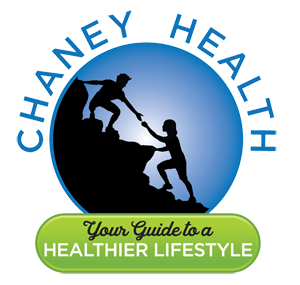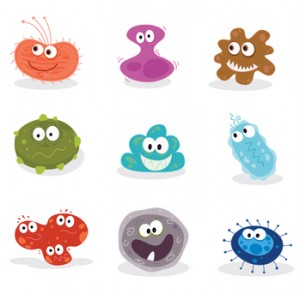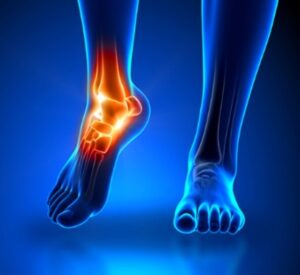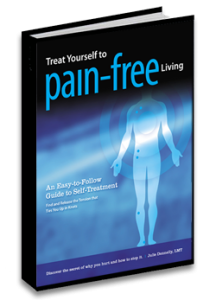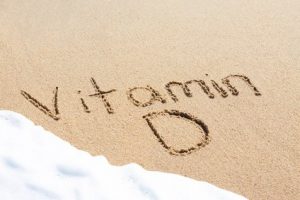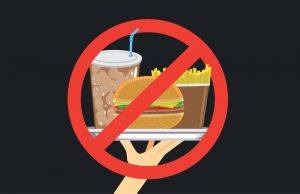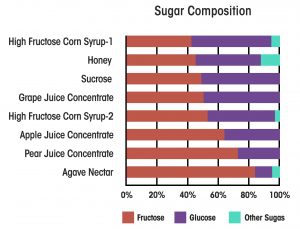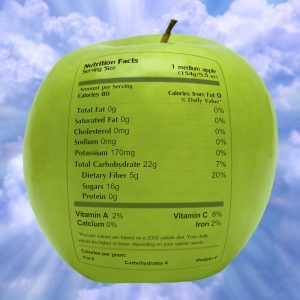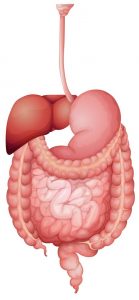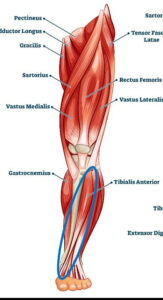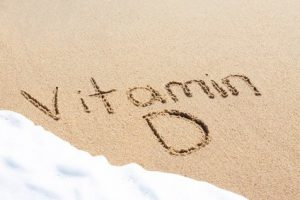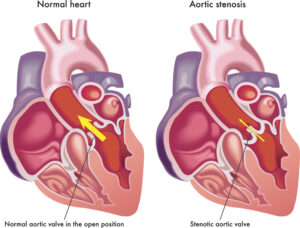Why Is The Cochrane Collaboration The Gold Standard?
Author: Dr. Stephen Chaney
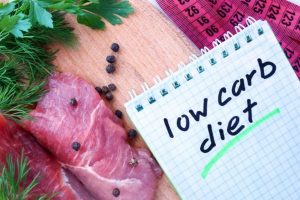 Atkins, South Beach, Whole30, Low Carb, high Fat, Low Carb Paleo, and Keto. Low carb diets come in many forms. But they have these general characteristics:
Atkins, South Beach, Whole30, Low Carb, high Fat, Low Carb Paleo, and Keto. Low carb diets come in many forms. But they have these general characteristics:
- They restrict carbohydrate intake to <40% of calories.
- They restrict grains, cereals, legumes, and other carbohydrate foods such as dairy, fruits, and some vegetables.
- They replace these foods with foods higher in fat and protein such as meats, eggs, cheese, butter, cream, and oils.
- When recommended for weight loss, they generally restrict calories.
What about the science? Dr. Strangelove and his friends tell you that low carb diets are better for weight loss, blood sugar control, and are more heart healthy than other diets. But these claims are controversial.
Why is that? I have discussed this in previous issues of “Health Tips From The Professor”. Here is the short version.
- Most studies on the benefits of low carb diets compare them with the typical American diet.
-
- The typical American diet is high in fat, sugar and refined flour, and highly processed foods. Anything is better than the typical American diet.
- Most low carb diets are whole food diets.
-
- Any time you replace sodas and highly processed foods with whole foods you will lose weight and improve your health.
- Most low carb diets are highly structured. There are rules for which foods to avoid, which foods to eat, and often additional rules to follow.
-
- Any highly structured diet causes you to focus on what you eat. When you do that, you lose weight. When you lose weight, your health parameters improve.
-
- As I have noted before, short term weight loss and improvement in health parameters are virtually identical for the very low carb keto diet and the very low-fat vegan diet.
With all this uncertainty you are probably wondering, “What is the truth about low carb diets?”
A recent study by the Cochrane Collaboration (CE Naude et al, Cochrane Database of Systematic Reviews, 28 January 2022) was designed to answer this question.
The Cochrane Collaboration is considered the gold standard of evidence-based medicine. To help you understand why this is, I will repeat a summary of how the Cochrane Collaboration approaches clinical studies that I shared two weeks ago.
Why Is The Cochrane Collaboration The Gold Standard?
 Who you gonna call? It’s not Ghostbusters. It’s not Dr. Strangelove’s health blog. It’s a group called the Cochrane Collaboration.
Who you gonna call? It’s not Ghostbusters. It’s not Dr. Strangelove’s health blog. It’s a group called the Cochrane Collaboration.
The Cochrane Collaboration consists of 30,000 volunteer scientific experts from across the globe whose sole mission is to analyze the scientific literature and publish reviews of health claims so that health professionals, patients, and policy makers can make evidence-based choices about health interventions.
In one sense, Cochrane reviews are what is called a “meta-analysis”, in which data from numerous studies are grouped together so that a statistically significant conclusion can be reached. However, Cochrane Collaboration reviews differ from most meta-analyses found in the scientific literature in a very significant way.
Many published meta-analyses simply report “statistically significant” conclusions. However, statistics can be misleading. As Mark Twain said: “There are lies. There are damn lies. And then there are statistics”.
The Cochrane Collaboration also reports statistically significant conclusions from their meta-analyses. However, they carefully consider the quality of each individual study in their analysis. They look at possible sources of bias. They look at the design and size of the studies. Finally, they ask whether the conclusions are consistent from one study to the next. They clearly define the quality of evidence that backs up each of their conclusions as follows:
- High-quality evidence. Further research is unlikely to change their conclusion. This is generally reserved for conclusions backed by multiple high-quality studies that have all come to the same conclusion. These are the recommendations that are most often adopted into medical practice.
- Moderate-quality evidence. This conclusion is very likely to be true, but further research could have an impact on it.
- Low-quality evidence. Further research is needed and could alter the conclusion. They are not judging whether the conclusion is true or false. They are simply saying more research is needed to reach a definite conclusion.
This is why their reviews are considered the gold standard of evidence-based medicine. If you are of a certain age, you may remember that TV commercial “When EF Hutton talks, people listen.” It is the same with the Cochrane Collaboration. When they talk, health professionals listen.
How Was The Study Done?
 The authors of this Cochrane Collaboration Report included 61 published clinical trials that randomized participants into two groups.
The authors of this Cochrane Collaboration Report included 61 published clinical trials that randomized participants into two groups.
- The first group was put on a low carbohydrate diet (carbohydrates = <40% of calories).
- The second group was put on a “normal carbohydrate” diet (carbohydrates = 45-65% of calories, as recommended by the USDA and most health authorities).
-
- The normal carbohydrate diet was matched with the low carbohydrate diet in terms of caloric restriction.
-
- Both diets were designed by dietitians and were generally whole food diets.
The participants in these studies:
- Were middle-aged.
- Were overweight or obese.
- Did not have diagnosed heart disease or cancer.
- May have diagnosed type-2 diabetes. Some studies selected participants that had diagnosed type 2 diabetes. Other studies excluded those patients.
The studies were of 3 types:
- Short-term: Participants in these studies followed their assigned diets for 3 to <12 months.
- Long-term: Participants in these studies followed their assigned diets for >12 to 24 months.
- Short-term with maintenance: Participants in these studies followed their assigned diets for 3 months followed by a 9-month maintenance phase.
What Is The Truth About Low Carb Diets?
 All the studies included in the Cochrane Collaboration’s meta-analysis randomly assigned overweight participants to a low carbohydrate diet (carbohydrates = <40% of calories) or to a “normal carbohydrate” diet (carbohydrates = 45-65% of calories) with the same degree of caloric restriction.
All the studies included in the Cochrane Collaboration’s meta-analysis randomly assigned overweight participants to a low carbohydrate diet (carbohydrates = <40% of calories) or to a “normal carbohydrate” diet (carbohydrates = 45-65% of calories) with the same degree of caloric restriction.
If low carb diets have any benefit in terms of weight loss, improving blood sugar control, or reducing heart disease risk, these are the kind of studies that are required to validate that claim.
This is what the Cochrane Collaboration’s meta-analysis showed.
When they analyzed studies done with overweight participants without type 2 diabetes:
- Weight loss was not significantly different between low carb and normal carb diets in short-term studies (3 to <12 months), long-term studies (>12 to 24 months), and short-term studies followed by a 9-month maintenance period.
- There was also no significant difference in the effect of low carb and normal carb diets on the reduction in diastolic blood pressure and LDL cholesterol.
Since diabetics have trouble controlling blood sugar, you might expect that type 2 diabetics would respond better to low carb diets. However, when they analyzed studies done with overweight participants who had type 2 diabetes:
- Weight loss was also not significantly different on low carb and normal carb diets.
- There was no significant difference in the effect of low carb and normal carb diets on the reduction in diastolic blood pressure, LDL cholesterol, and hemoglobin A1c, a measure of blood sugar control.
Of course, the reason Cochrane Collaboration analyses are so valuable is they also analyze the strength of the studies that were included in their analysis.
You may remember in my article two weeks ago, I reported on the Cochrane Collaboration’s report supporting the claim that omega-3 supplementation reduces pre-term births. In that report they said that the studies included in their analysis were high quality. Therefore, they said their report was definitive and no more studies were needed.
This analysis was different. The authors of this Cochrane Collaboration report said that the published studies on this topic were of moderate quality. This means their conclusion is very likely to be true, but further research could have an impact on it.
What Does This Study Mean For You?
 If you are a bit confused by the preceding section, I understand. That was a lot of information to take in. Let me give you the Cliff Notes version.
If you are a bit confused by the preceding section, I understand. That was a lot of information to take in. Let me give you the Cliff Notes version.
In short, this Cochrane Collaboration Report concluded:
- Low carb diets (<40% of calories from carbohydrates) are no better than diets with normal carbohydrate content (45-65% of calories from carbohydrates) with respect to weight loss, reduction in heart disease risk factors, and blood sugar control. Dr. Strangelove has been misleading you again.
- This finding is equally true for people with and without type 2 diabetes. This calls into question the claim that people with type 2 diabetes will do better on a low carb diet.
- The published studies on this topic were of moderate quality. This means their conclusion is very likely to be true, but further research could have an impact on it.
If you are thinking this study can’t be true because low carb diets work for you, that is because you are comparing low carb diets to your customary diet, probably the typical American diet.
- Remember that any whole food diet that eliminates sodas and processed foods and restricts the foods you eat will cause you to lose weight. Whole food keto and vegan diets work equally well short-term compared to the typical American diet.
- And any diet that allows you to lose weight improves heart health parameters and blood sugar control.
If you are thinking about the blogs, books, and videos you have seen extolling the virtues of low carb diets, remember that the Dr. Strangeloves of the world only select studies comparing low carb diets to the typical American diet to support their claims.
- The studies included in this Cochrane Collaboration report randomly assigned participants to the low carb and normal carb diets and followed them for 3 to 24 months.
-
- Both diets were whole food diets designed by dietitians.
-
- Both diets reduced caloric intake to the same extent.
What about the claims that low carb diets are better for your long-term health? There are very few studies on that topic. Here are two:
- At the 6.4-year mark a recent study reported that the group with the lowest carbohydrate intake had an increased risk of premature death – 32% for overall mortality, 50% for cardiovascular mortality, 51% for cerebrovascular mortality, and 36% for cancer mortality. I will analyze this study in a future issue of “Health Tips From The Professor”.
- At the 20-year mark a series of studies reported that:
-
- Women consuming a meat-based low carb diet for 20 years gained just as much weight and had just as high risk of heart disease and diabetes as women consuming a high carbohydrate, low fat diet.
-
- However, women consuming a plant-based low carb diet for 20 years gained less weight and had reduced risk of developing heart disease and diabetes as women consuming a high carbohydrate, low fat diet.
My recommendation is to avoid low-carb diets. They have no short-term benefits when compared to a healthy diet that does not eliminate food groups. And they may be bad for you in the long run. Your best bet is a whole food diet that includes all food groups but eliminates sodas, sweets, and processed foods.
However, if you are committed to a low carb diet, my recommendation is to choose the low-carb version of the Mediterranean diet. It is likely to be healthy long term.
The Bottom Line
The Cochrane Collaboration, the gold standard of evidence-based medicine, recently issued a report that evaluated the claims made for low carb diets.
All the studies analyzed in the Cochrane Collaboration’s report randomly assigned overweight participants to a low carbohydrate diet (carbohydrates = <40% of calories) or to a “normal carbohydrate” diet (carbohydrates = 45-65% of calories) with the same degree of caloric restriction.
If low carb diets have any benefit in terms of weight loss, improving blood sugar control, or reducing heart disease risk, these are the kind of studies that are required to validate that claim.
The Cochrane Collaboration Report concluded:
- Low carb diets (<40% of calories from carbohydrates) are no better than diets with normal carbohydrate content (45-65% of calories from carbohydrates) with respect to weight loss, reduction in heart disease risk factors, and blood sugar control.
- This is equally true for people with and without type 2 diabetes.
- The published studies on this topic were of moderate quality. This means their conclusion is very likely to be true, but further research could have an impact on it.
My recommendation is to avoid low carb diets. They have no short-term benefits when compared to a healthy diet that does not eliminate food groups. And they may be bad for you in the long run. Your best bet is a whole food diet that includes all food groups but eliminates sodas, sweets, and processed foods.
However, if you are committed to a low carb diet, my recommendation is to choose the low carb version of the Mediterranean diet. It is likely to be healthy long term.
For more details on the study and what it means for you, read the article above.
These statements have not been evaluated by the Food and Drug Administration. This information is not intended to diagnose, treat, cure, or prevent any disease.
